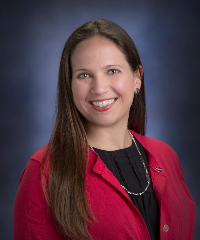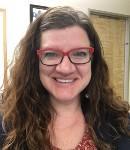GISN & STEM Professional's Blog - GLOBE International STEM Network
GISN & STEM Professional's Blog
The GLOBE International STEM Network (GISN) and STEM Professional's Blog is an online collaborative effort where scientists associated with GLOBE post their thoughts, comments, and philosophies about a variety of science topics.
GLOBE strongly encourages positive and productive discussions to further advance the scientific understanding of all involved with The GLOBE Program.
Filter By:
Blogs List
The GLOBE Clouds team at NASA Langley Research Center in Hampton, VA would like to highlight the top observers for the month of January! Thank you to all observers for submitting your observations and using the satellite matching of data.
Top 10 cloud observers for January 2018
Observer
School
Country
Total Observations
Ebtisam Nahhas
19th Secondary Girls School at Al-Madinah Al-Monawarah
Saudi Arabia
121
Helio Cabral ...
Read More »
Posted in:
GLOBE Science Topics:
GENERAL SCIENCE
BACKYARD SCIENCE
GLOBE PROTOCOLS
News Topics:
COMPETITIONS
Primary Audience:
TRAINERS
TEACHERS
STUDENTS
PARTNERS
SCIENTISTS
COUNTRY COORDINATORS
ALUMNI
Friday, February 2nd is Groundhog Day and some of us will be waiting to see if Punxsutawney Phil saw a shadow or not! Punxsutawney Phil and other groundhogs have been predicting the arrival of Spring for many years and has intrigued us all.
NASA Education Specialist
Dr. Anne Weiss
NASA Education specialist at NASA Langley Research Center, Dr. Anne Weiss, was gathering cloud and temperature data while visiting her nephews (3rd, 5th, and 8th grade) when they got talking about Punxsutawney Phil. Her nephews were questioning if Punxsutawney Phil’s forecast would affect ...
Posted in:
Curriculum:
EDUCATION RESEARCH
SCIENCE AND MATH
GLOBE Science Topics:
GENERAL SCIENCE
SCIENTIST SKILLS
BACKYARD SCIENCE
GLOBE PROTOCOLS
Investigation Areas:
CLOUDS
Learning Activities:
ESTIMATING CLOUD COVER
Primary Audience:
TRAINERS
TEACHERS
STUDENTS
Satellites can detect and collect a lot of observations in very short amount of time. It is simple to think that anything that is white in an image is a cloud. Well, not always.
Look at these beautiful images taken by the GOES 16 satellite of the recent "Winter Weather Bomb" that left a blanket of snow from South Georgia to New England on January 4, 2018. Click here and watch a loop of images from the GOES 16 satellite for January 4, 2018.
GOES 16 Image taken on January 4, 2018 at 171720Z
GOES 16 Image taken on January 4, 2018 at 201720Z
...
Posted in:
Curriculum:
STEM
EDUCATION RESEARCH
Event Topics:
OTHER
GLOBE Science Topics:
SCIENTIST SKILLS
GLOBE PROTOCOLS
GENERAL SCIENCE
BACKYARD SCIENCE
CLIMATE
Investigation Areas:
CLOUDS
Learning Activities:
ATMOSPHERE AND CLIMATE
Primary Audience:
TRAINERS
TEACHERS
STUDENTS
PARTNERS
SCIENTISTS
Here at NASA Langley we've started the year with snow, and lots of it!
Has all this snow and weather gotten you hooked on the weather? Do you like to watch the weather reports on TV or on your phone? Dr. Yolanda Shea, a scientist at NASA Langley Research Center, used to do just that when she was younger. See what inspired her and how she became a NASA scientist! Comment and share how this video inspires you!
Also, with all this snow on the ground, be sure to submit your cloud reports! Enter your data through GLOBE or use the GLOBE Observer app and follow ...
Posted in:
Curriculum:
STEM
GLOBE Science Topics:
GENERAL SCIENCE
SCIENTIST SKILLS
BACKYARD SCIENCE
Primary Audience:
TRAINERS
TEACHERS
STUDENTS
COUNTRY COORDINATORS
PARTNERS
Learning science involves learning important concepts, conducting experiments to see first-hand how researchers discovered and confirmed some elements of science concepts, and learning how to think scientifically. With this complete approach to learning science, students are well-prepared to deal with the natural world around them and to make wise decisions when confronted with various choices. The ability to think scientifically is a valuable skill in almost all aspects of life and doing science teaches scientific habits of mind.
Students can do science through research projects ...
Posted in:
Curriculum:
STEM
SCIENCE AND MATH
GLOBE Science Topics:
SCIENTIST SKILLS
GENERAL SCIENCE
BACKYARD SCIENCE
GLOBE Working Groups:
SCIENCE WORKING GROUP
Investigation Areas:
ATMOSPHERE
EARTH AS A SYSTEM
HYDROSPHERE
PEDOSPHERE (SOIL)
BIOSPHERE
News Topics:
VIRTUAL SCIENCE FAIR
COMPETITIONS
Primary Audience:
TEACHERS
STUDENTS
PARTNERS
COUNTRY COORDINATORS
Consider the rain gauge used in GLOBE, CoCoRaHS, and other citizen science programs. Just four pieces plus 2 mounting screws – an inner graduated cylinder, an outer cylinder, a cap/funnel, and a mounting bracket. The area of the outer tube is exactly 10 times the areas of the inner tube and the cap/funnel, so the graduations on the inner cylinder can be spaced ten times further apart. Thus, 0.2 mm of rain fills the inner tube to a depth of 2.0 mm, which one can read.
In addition, if heavy rainfall fills the inner cylinder, the rest of the rainfall overflows into the outer cylinder, ...
Posted in:
Curriculum:
STEM
Field Campaigns:
EL NIÑO
GPM
GLOBE Science Topics:
BACKYARD SCIENCE
GLOBE PROTOCOLS
Investigation Areas:
ATMOSPHERE
Primary Audience:
TEACHERS
STUDENTS
ALUMNI
In most scientific research an important test is whether the results of an experiment can be repeated, typically repeated by another lab and research group. A result that cannot be confirmed in this way is generally viewed as invalid. This is a great test for controlled experiments where virtually identical experimental conditions may be achieved.
In Earth science research involving observations of the natural world, experimental conditions cannot be reproduced. For environmental research the standard must switch for repeatable to intercomparable – capable of being compared. ...
Posted in:
GLOBE Science Topics:
GENERAL SCIENCE
EARTH SYSTEM SCIENCE
BACKYARD SCIENCE
GLOBE PROTOCOLS
Investigation Areas:
HYDROSPHERE
PEDOSPHERE (SOIL)
ATMOSPHERE
BIOSPHERE
Primary Audience:
TRAINERS
TEACHERS
STUDENTS
SCIENTISTS
ALUMNI
This week we welcome long-time friend of GLOBE, Dr. Margaret LeMone, Chief Scientist for the GLOBE Program from 2003-2009, as our guest blogger. Dr. LeMone is currently working in the field of weather and cloud formation at the National Center for Atmospheric Research (NCAR).
Originally posted at http://spark.ucar.edu/blog/measuring-rainfall on September 23, 2013.
Dr. Margaret LeMone,
Credit: UCAR
Dr. Margaret LeMone is an NCAR Senior Scientist who studies weather and cloud formation. For more information about her research, visit Dr. LeMone's home page .
A ...
Posted in:
GLOBE Science Topics:
BACKYARD SCIENCE
Investigation Areas:
PRECIPITATION
Blog originally posted on the GLOBE Scientists' Blog: http://blog.globe.gov/sciblog/2012/11/01/full-circle-superior-part-iv-changing-superior-changing-industry/
This week we pick back up on our Full Circle Superior Series. In 2010 Mike Link and Kate Crowley chose to walk around the largest fresh water lake in the world – Lake Superior which has shoreline in both Canada and the United States. This 1555 mile/145 day walk was the first ever by a couple and the first to attempt to stay on the shoreline. Because Mike and Kate are educators in their sixties they wanted ...
Blog originally posted on the GLOBE Scientists' Blog at http://blog.globe.gov/sciblog/2012/08/28/full-circle-superior-part-ii-studying-streams/
We have a guest blogger this week. Mike Linke is posting his second blog in a series about his walk with his wife, Kate Crowley, around Lake Superior.
This is the second in a series about the science of Full Circle Superior; a walk around the world’s largest freshwater lake. You can read the first blog post here. My wife, Kate Crowley, and I determined that we would be the first couple to walk around this lake, trying ...
Posted in:
GLOBE Science Topics:
EARTH AS A SYSTEM
BACKYARD SCIENCE
CLIMATE
Investigation Areas:
HYDROSPHERE
Learning Activities:
LAND COVER/BIOLOGY
HYDROLOGY
All over the United States, spring flowers such as daffodils and crocuses began blooming nearly a month ago due to an unseasonably warm winter. Some of my friends from many parts of the country have been mentioning how beautiful their gardens are and enjoying the warm weather. Even my family and friends from the Mid-Atlantic region have been sending photos showing off their beautiful home gardens.
Daffodils in bloom in late February
Many think it’s really nice to see green grass, budding trees, and flowers in bloom in late February, as it’s a spirit lift ...
I have always been passionate about the weather. When I realized that to fulfill this passion I had to have a career in atmospheric science, I started acquiring all sorts of books, charts, movies, and other weather related things. One of those books was a book from the early 1990’s called It’s Raining Frogs and Fishes by Jerry Dennis. It was really interesting to me because it discussed all of the different seasons and some different phenomena that different parts of the world experience during the seasons. As I continue to blog for The GLOBE Program, my mind ...
Posted in:
GLOBE Science Topics:
BACKYARD SCIENCE
GENERAL SCIENCE
When you think about farms, you may think of the sounds you hear. Those sounds may include both natural and manmade sounds, such as the rustling of produce in the wind or machines working the fields. While these are expected sounds that can indicate farm health, scientists recently have been looking at another natural sound: songbirds.
Farmers are becoming more interested in looking at the key connections between ecological, economic, and social components to managing their farms, according to Quest science blog . It is then important to make sure that clear and ...
Posted in:
GLOBE Science Topics:
CLIMATE CHANGE
BACKYARD SCIENCE
CLIMATE
Investigation Areas:
EARTH AS A SYSTEM
ARCTIC BIRD MIGRATION
Sometimes in a rapidly changing world, it is difficult to see the effects that small changes in human lifestyle can have on not only climate, but on ecosystems. Various countries and international organizations are working to pass legislation to ensure change. One such case of legislation working is being observed in the San Francisco Bay – the return of harbor porpoises. This was recently reported in the QUEST biology blog .
The map below shows the location of the San Francisco Bay, marked by the bubble with an A, from Google.
In 1972, ...
Posted in:
GLOBE Science Topics:
GENERAL SCIENCE
BACKYARD SCIENCE
GLOBE PROTOCOLS
Investigation Areas:
HYDROSPHERE
A few weeks ago, the British Broadcasting Company (BBC) wrote about a report claiming that some of the fruit from native trees in Britain are ripening anywhere from 13 to 18 days earlier than they did a decade ago. The report was from Nature’s Calendar, a data collection network in the United Kingdom. While the cause isn’t specifically known, many believe it’s due to a change in climate.
What does a change like this mean to the earth as a system?
Scientists are interested in studying the connections between the different Earth processes – from how greenhouse ...
2011 has been an interesting year in regards to rainfall for the GLOBE country of Thailand, as both the north and south portions of the country have seen significant flooding. Let’s take a look at Bangkok, the capital city of Thailand, which is located in the north, as well as Phuket, which is located in the south. Here’s a map of the country for those who aren’t familiar with Thailand, with the cities of interest indicated by the red dots:
Map of Thailand from Google
First, we’ll begin by examining the major flooding ...
Posted in:
GLOBE Science Topics:
BACKYARD SCIENCE
Late last week, Pacific Ocean visitors near San Diego, California, USA were able to see an amazing sight that doesn’t happen very often… glowing waves!
So what exactly is the process that causes the glowing waves?
Algae! This particular type of algae, Lingulodinium polyedrum , began blooming in late August. During the day, the waters off the coast of California turn a brownish-red color, according to The University of California – San Diego scientists. Take a look at what this microorganism looks like under a microscope:
Image from The Smithsonian ...
Posted in:
GLOBE Science Topics:
BACKYARD SCIENCE
Investigation Areas:
HYDROSPHERE
—
20 Items per Page










